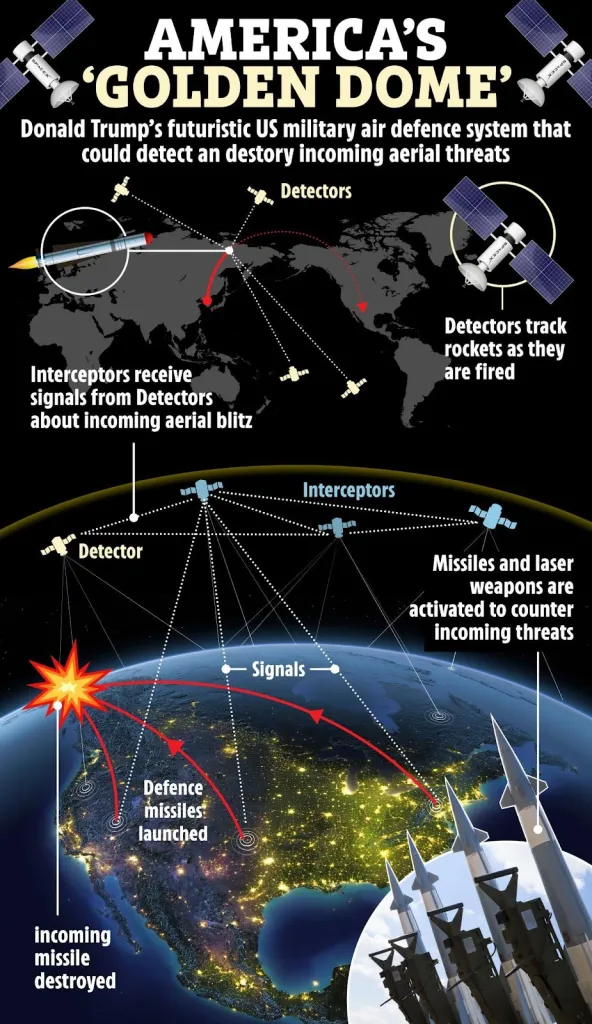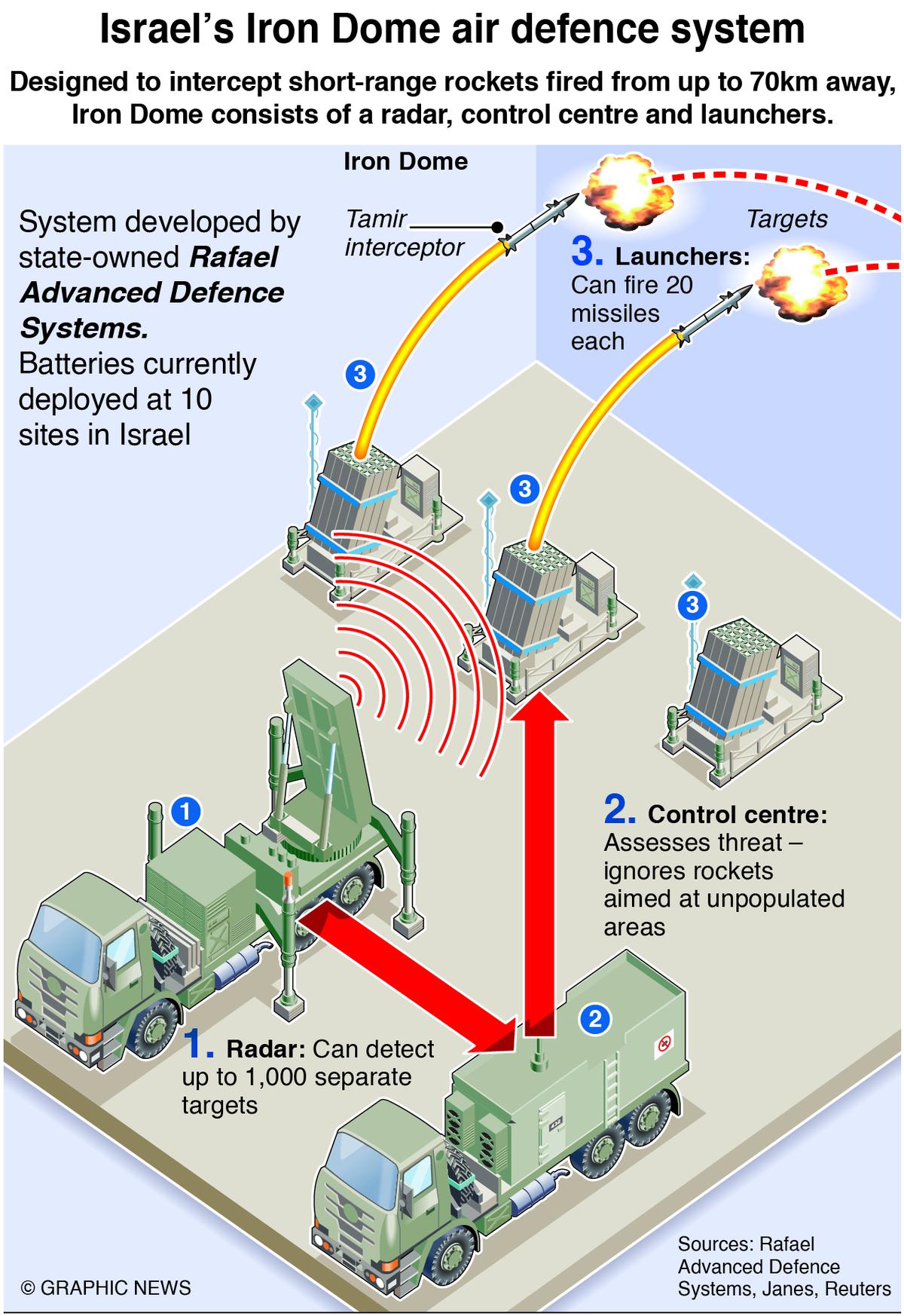Context:
The United States’ proposed ‘Golden Dome’ missile defence system has triggered geopolitical debate following an offer extended to Canada. The offer, presented by U.S. President Donald Trump, links Canada’s access to the system with conditions that have raised significant concerns about national sovereignty and bilateral relations.
About the Golden Dome defense systems:
The Golden Dome is conceived as a response to the evolving nature of missile threats posed by state actors such as Russia, China, North Korea, and Iran.
The increasing sophistication of ICBMs (Intercontinental Ballistic Missiles), hypersonic glide vehicles, and submarine-launched ballistic missiles (SLBMs) has rendered conventional missile defence systems inadequate.
Key objectives of the Golden Dome include:
· Rapid interception of ICBMs during the boost phase
· Neutralization of hypersonic projectiles before atmospheric re-entry
· Global, persistent surveillance using satellite constellations
· Autonomous engagement systems with artificial intelligence for rapid targeting
Comparison with Existing Systems:
Iron Dome (Israel)
· Developed by Rafael Advanced Defense Systems and operational since 2011
· Short-range system using ground-based radar and Tamir interceptors
· Effective against rockets, mortars, and drones from non-state actors
· Localized protection with limited scalability
U.S. Systems (Current)
· Ground-based Midcourse Defense (GMD): Targets long-range ballistic missiles in midcourse phase; limited coverage
· Aegis BMD: Ship-based interceptors using SM-3 and SM-6 missiles
· THAAD (Terminal High Altitude Area Defense): Targets missiles during terminal descent phase
· Patriot systems: Designed for shorter-range tactical threats
None of these systems offer real-time, global protection or space-based interception. The Golden Dome aims to synthesize and supersede these approaches.
The Space-Based Interception Component:
Trump’s proposal centers around deploying thousands of Low Earth Orbit (LEO) satellites, forming an autonomous detection and interception grid. This would constitute the first operational use of orbital kinetic or directed-energy weapons for missile defence.
Key Features:
· Early-boost phase targeting: Intercepting missiles during launch is ideal but technologically demanding due to limited time and geographical proximity requirements
· AI-assisted targeting: Satellites would coordinate via machine learning algorithms for rapid threat identification
· Directed-energy weapons (DEWs): Lasers or microwave-based systems are under consideration but are not yet combat-proven
· Orbital permanence: 24/7 global coverage, bypassing limitations of radar line-of-sight
Iron Dome vs Golden Dome
|
Feature |
Iron Dome (Israel) |
Golden Dome (Proposed, USA) |
|
Purpose |
Regional missile defence |
Global missile defence |
|
Tech Basis |
Radar + ground interceptors |
Integrated radar + space-based systems |
|
Coverage |
Local (Israel) |
National/global (USA) |
|
Primary Threats |
Non-state actors (e.g. Hezbollah, Hamas) |
State actors with ICBMs (e.g. China, Russia) |
|
Use of Space |
None |
Central component |
Conclusion:
The proposed inclusion of Canada in the U.S. Golden Dome missile defence system underscores the complex intersection of security, sovereignty, and diplomacy. While the programme offers substantial technological and strategic benefits, the conditions tied to Canada’s involvement present serious political and ethical challenges. The outcome of this proposal may shape future models of defence cooperation and redefine the parameters of national alliance in the context of 21st-century geopolitical dynamics.








